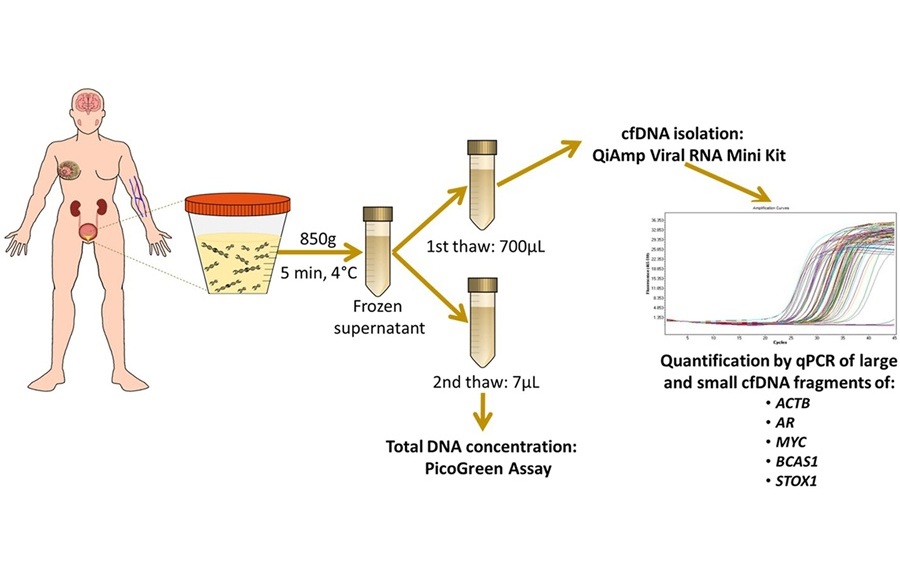Gene Testing Patents Block Competition, Slow Innovation
By LabMedica International staff writers
Posted on 13 May 2010
Exclusive licenses to gene patents, most of which in the United States are held by academic institutions and based on taxpayer-funded research, do more to block competition in the gene testing market than to trigger the development of new technologies for gauging disease risk, according to researchers. Posted on 13 May 2010
As single-gene tests give way to multigene or even whole-genome scans, exclusive patent rights could slow promising new technologies and business models for genetic testing even further, according to the Duke Institute for Genome Sciences & Policy (IGSP; Durham, NC, USA) researchers. The findings emerge from a series of case studies that examined genetic risk testing for 10 clinical conditions, including breast and colon cancer, cystic fibrosis, and hearing loss. The studies appear April 15, 2010, in a special issue of the journal Genetics in Medicine.
In seven of the conditions, exclusive licenses have been a source of debate. But in no case was the holder of exclusive patent rights the first to market with a test. "That finding suggests that while exclusive licenses have proven valuable for developing drugs and biologics that might not otherwise be developed, in the world of gene testing they are mainly a tool for clearing the field of competition, and that is a sure-fire way to irritate your customers, both doctors and patients,” said Robert Cook-Deegan, director of the IGSP Center for Genome Ethics, Law & Policy. "It's notable that a gene linked to cystic fibrosis is not subject to an exclusive license, yet there is now a vibrant market for tests to identify carriers of the cystic fibrosis gene. This suggests the problem is not patents, per se, but how they are being licensed, particularly by universities.”
Mr. Cook-Deegan reported that the case studies, originally undertaken at the request of the U.S. Secretary of Health and Human Services Advisory Committee on Genetics, Health, and Society (SACGHS; Bethesda, MD, USA) reveal that gene patenting itself is not necessarily the main problem. Instead, he noted, the problem is a troublesome combination of overly broad patents that are exclusively licensed to single companies.
More than two-thirds of the patents examined in the case studies are held by universities or other nonprofit institutions that depend on government or nonprofits for much of their biomedical research funding, frequently including the research leading to gene patents. Yet university licensing practices can end up hurting genetic testing laboratories at other universities, or preventing development of alternative tests that might offer improved accuracy, lower cost, or the ability to test for multiple gene mutations simultaneously.
The case studies of the gene patents come in the wake of a major decision in March 2010 in which a U.S. federal judge rejected seven patents on the BRCA1 and BRCA2 genes tied to breast and ovarian cancer, which are held by Myriad Genetics and the University of Utah Research Foundation, both based in Salt Lake City, UT, USA.
Contrary to expectation, the Duke team's review of Myriad's BRCA tests found they are not particularly expensive in relation to other tests, despite their virtual monopoly on the market. However, broad patent claims such as the ones held by Myriad have made it nearly impossible to pursue alternative ways to test clinically for BRCA genes without the risk of patent infringement.
A separate study published by the IGSP team in March 2010 in the journal Genomics showed just how broad some of the BRCA patent claims really are. They found that 15-letter stretches of DNA claimed in the Myriad patent are common throughout the human genome and could be found in 80% of the gene sequences placed in a publicly accessible database--GenBank--the year before Myriad sought patent protection.
Gene patents have been issued since the 1980s. Today, more than 4,000 sequences from human genes, covering about 20% of the human genome, are identified in at least one granted patent claim. "[These case studies] consist of deep analyses of 10 clinical conditions that were carefully selected to illuminate, as far as possible, a field in which there has been considerable heat but little light,” wrote Jim Evans, editor of Genetics in Medicine in a commentary introducing the special issue. He also issued an important reminder, "In the end, we must ask ourselves whether a given policy is ultimately in the best interest of patients. After all, although the patent system certainly seeks to harness business models and economic self-interest, it does so for the express purpose of furthering ‘progress in science and the useful arts' and not for the purpose of generating profits.”
Related Links:
Duke Institute for Genome Sciences & Policy














